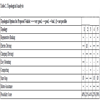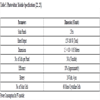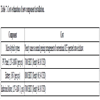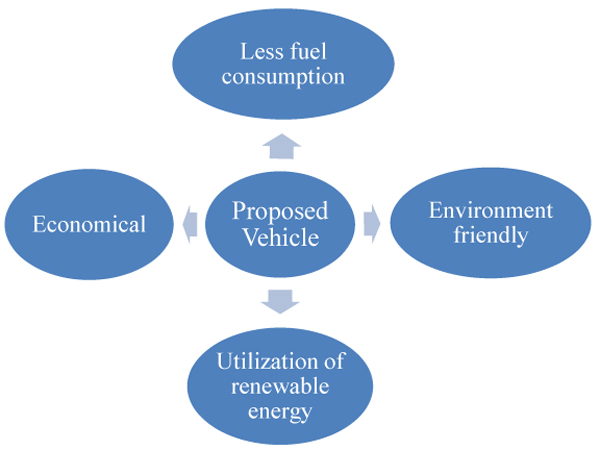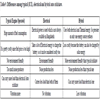- Home
- About Journals
-
Information for Authors/ReviewersEditorial Policies
Publication Fee
Publication Cycle - Process Flowchart
Online Manuscript Submission and Tracking System
Publishing Ethics and Rectitude
Authorship
Author Benefits
Reviewer Guidelines
Guest Editor Guidelines
Peer Review Workflow
Quick Track Option
Copyediting Services
Bentham Open Membership
Bentham Open Advisory Board
Archiving Policies
Fabricating and Stating False Information
Post Publication Discussions and Corrections
Editorial Management
Advertise With Us
Funding Agencies
Rate List
Kudos
General FAQs
Special Fee Waivers and Discounts
- Contact
- Help
- About Us
- Search

The Open Mechanical Engineering Journal
(Discontinued)
ISSN: 1874-155X ― Volume 14, 2020
Micro Hybridized Auto-rickshaw for Bangladesh: A Solution to Green Energy Vehicle
Avijit Mallik*, Arman Arefin
Abstract
Background:
Auto rickshaws are compact, three-wheeled vehicles which are normally used altogether in numerous Asian nations (i.e. China, Japan, Bangladesh, India, Pakistan and so forth) for transportation of people and products. The vehicles are little and have simple transportability in occupied Asian cities. In Bangladesh, auto rickshaws/simple bicycles regularly offer their taxi services, as they are fantastically reasonable to work. Simultaneously, these three-wheelers running on fuel cause extreme air-pollution and create impressive measures of greenhouse gasses (i.e. Carbon dioxide).
Objectives:
This paper introduces a transportation system in view of auto rickshaws that work in an eco-accommodating way. Existing vehicles are to be substituted by a small scale-cross sort framework overhauled in a way which helps the productivity of the vehicle.
Methods:
A reviving foundation is suggested that will take into consideration the power-packs to be charged utilizing halfway energy, for example, solar energy. Necessary simulations had been done using MATLAB platform.
Results:
Results shows that the current vehicle and nature, in which it works, made a model of the vehicle and researched re-charging infrastructure prerequisites and plans. About 31% efficiency was observed.
Conclusions:
The objective of the research introduced in this paper is to build up a conservative, vigorous and feasible fuel utilization system and deplete auto-rickshaws. In this research, 23% of grid power savings has been found.
Article Information
Identifiers and Pagination:
Year: 2018Volume: 12
First Page: 124
Last Page: 137
Publisher Id: TOMEJ-12-124
DOI: 10.2174/1874155X01812010124
Article History:
Received Date: 20/11/2017Revision Received Date: 26/04/2018
Acceptance Date: 27/04/2018
Electronic publication date: 23/05/2018
Collection year: 2018
open-access license: This is an open access article distributed under the terms of the Creative Commons Attribution 4.0 International Public License (CC-BY 4.0), a copy of which is available at: (https://creativecommons.org/licenses/by/4.0/legalcode). This license permits unrestricted use, distribution, and reproduction in any medium, provided the original author and source are credited.
* Address correspondence to this author at the Department of Mechanical Engineering, RUET, Rajshahi-6204, Bangladesh; Tel: +8801876603829; E-mail: avijitme13@gmail.com
| Open Peer Review Details | |||
|---|---|---|---|
| Manuscript submitted on 20-11-2017 |
Original Manuscript | Micro Hybridized Auto-rickshaw for Bangladesh: A Solution to Green Energy Vehicle | |
1. INTRODUCTION
With continued economic growth, all sectors of Bangladesh are developing day by day. With this development, megacities of the country are experiencing more traffic. Buses, Rickshaws and Auto-rickshaws (Electric or Internal Combustion Engine run) are the main public transports in megacities (i.e. Dhaka, Chittagong, Rajshahi) [1R. Basri, T. Khatun, M.S. Reza, and M.M.H. Khan, "Changing modes of transportation: A case study of rajshahi city corporation", Bangladesh J. Pol. Econ., vol. 29, no. 3, pp. 1-23.]. The auto-rickshaw and the relatively modern iteration of the e-rickshaw (electronic rickshaw) because of their low cost are becoming more popular than taxis in current century [2R. Brouwer, S. Akter, L. Brander, and E. Haque, "Socioeconomic vulnerability and adaptation to environmental risk: A case study of climate change and flooding in Bangladesh", Risk Anal., vol. 27, no. 2, pp. 313-326.
[http://dx.doi.org/10.1111/j.1539-6924.2007.00884.x] [PMID: 17511700] ]. In Asian megacities, like Mumbai, Dhaka, Kolkata, Bengaluru and Chittagong; this vehicle is mostly used for medium travelling distance (1 to 7 km’s). Auto-rickshaws are a common means of public transportation in many developing countries in the world [1R. Basri, T. Khatun, M.S. Reza, and M.M.H. Khan, "Changing modes of transportation: A case study of rajshahi city corporation", Bangladesh J. Pol. Econ., vol. 29, no. 3, pp. 1-23., 3Md. Arefin, A. Mallik, A. Mujawar, and I. Rashid, "A case study nn ‘ dual energy source running Vehicle, It’s design and implementation in Bangladesh", Int. J. Sci. Environ. Technol., vol. 6, no. 4, pp. 2369-2385.].
Auto-rickshaw is a three wheeler mostly running on fuel (CNG/LPG) or electrical energy. Those running on batteries by means of electricity are often called “Easy Bikes”, locally it is a very cost effective vehicle. LPG (Liquefied Petroleum Gas) and CNG (Compressed Natural Gas) are nonrenewable energy sources. At present in Bangladesh, the fuel price is increasing day by day. Burning of petrol, natural gas and oils produces carbon dioxide, which is responsible for global warming. Moreover, the exhaust gases release different types of deadly fluid aerosols and chemicals in the atmosphere which is very harmful for humans and animals [4I.R. Mujawar, and M. Avijit, "Case study on greenhouse process, gases, effect and control management", Int. J. Innovative Res. Adv. Stud., vol. 4, no. 5, pp. 430-440., 5F. Ahmed, and H. Ishiga, "Trace metal concentrations in street dusts of Dhaka city, Bangladesh", Atmos. Environ., vol. 40, no. 21, pp. 3835-3844.
[http://dx.doi.org/10.1016/j.atmosenv.2006.03.004] ]. Presently, there are many types, designs and variations in auto-rickshaws.
The best way to redesign the rickshaw is to make the key power source hybridized. One way to do this is to use an energy system that can take advantage of several sources of renewable energy; i.e. Solar energy, wind energy etc. Auto-rickshaws are a great prospect for electrification because of relatively low velocity and a relatively small distance protected in a day [6M. Avijit, Md A. Arefin, and S. Kumar, "Solar based micro hybridized auto-rickshaw and its feasibility analysis for bangladesh", Proceedings of the Int. Conf. Mech. Eng. Ren. Energy (ICMERE), . CUET, 18-20 December]. In this paper, a mechanism using micro hybrid system to run an engine driven rickshaw is shown and defined. Solar energy and thermal energy can be used to drive the auto-rickshaw jointly by means of hybridization. Solar energy is chosen here because Bangladesh gets huge amount of energy from the sun. Here, the best sunlight hours received in Khulna ranging from 2.86 to 9.04 hours and in Barisal it ranges from 2.65 to 8.75 hours [7S.I. Sharif, A.R.A. Md, M. Al-Amin, and A.B.S. Md, "The prospect of renewable energy resources in bangladesh: A study to achieve the national power demand", Energy and Power, vol. 8, no. 1, pp. 1-6.
[http://dx.doi.org/10.5923/j.ep.20180801.01] ]. Compared to other conventional vehicles, micro hybridized vehicles consume less energy and produces much less green house and toxic gases. However, a critical review of literature regarding several works done on auto-rickshaw in dissimilar fields is shown in Table 1.
From Table 1, most of the works on auto-rickshaw comments about petroleum burning or renewable source driven vehicle. This research was directed from T. Hofman et al. 2009; which was focused on hybridization of engine operated auto-rickshaws for India, but this research didn’t mention any renewable source of input energy.
1.1. Power Train of the Vehicle
In this proposed vehicle, electrical and thermal energy sources are combined along with micro hybrid system. As energy sources ICE and Batteries are being used. These two power sources are hybridized. The battery is charged my means of national grid and solar energy. There are several hybridization methods available like Series, parallel, series-parallel and complex; parallel hybridization is implemented here. The basic difference between a hybrid and a conventional vehicle is the braking system. Hybrid vehicles use regenerative braking system; an energy recovery module which slows down the vehicle by transforming its kinetic energy into a form and is used immediately to other works or stored for further use. Hybrid vehicles are less fuel consuming [17L.R. Brandenburg, and E.T. King, No. 5291960. U.S. Patent. Hybrid electric vehicle regenerative braking energy recovery system, 1994.]. Fig. (1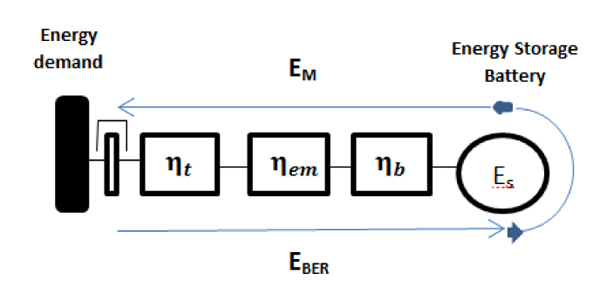 ) shows the schematic diagram of the vehicle power train.
) shows the schematic diagram of the vehicle power train.
 |
Fig. (1) Schematic diagram of the vehicle power train. |
The fuel saving potential might be increased by recuperating brake energy and re-using this energy, EEBR denotes the recuperating brake energy (for electric driving). This electric energy is used for driving (EM). Fig. (1 ) shows the vehicle power drive.
) shows the vehicle power drive.
This recuperating/regenerating brake energy is calculated over the drive cycle in tf time;
 |
(1) |
In the above equation (1), fbr denotes brake friction (regenerative). The subscripts denotes namely the transmission, electric motor and battery efficiency which is respectively assumed 98%, 85% and 80% average constant. The engine assumed here is “shut off kind” and has no drag losses due to electric driving and braking.
1.2. Design Topology
In addition to the element sizing and control engine optimization, the topology selection also plays an important role in the general hybrid drive train optimization. In Fig. (1 ), an understanding is given of different locations of joining the hybrid system to the drive coach. If more hybrid driving modes can be used, then fuel saving potential rises. Depending on the topology, a number hybrid functions can be utilized very well other functions increase difficulties. In Table 2, an overview is given on the pros and cons of different topologies. Through this qualitative comparison, it can be concluded that topologies 1, 3, and 5 perform the same and are therefore favorable. The topological table here is based on quality and nature of the spare parts.
), an understanding is given of different locations of joining the hybrid system to the drive coach. If more hybrid driving modes can be used, then fuel saving potential rises. Depending on the topology, a number hybrid functions can be utilized very well other functions increase difficulties. In Table 2, an overview is given on the pros and cons of different topologies. Through this qualitative comparison, it can be concluded that topologies 1, 3, and 5 perform the same and are therefore favorable. The topological table here is based on quality and nature of the spare parts.
A Table showing the topological analysis is give below:
Fig. (2 ) shows the topology designing of the proposed vehicle. The numbering indicates the possible locations of the components of the system. Here, ICE-Internal Combustion Engine, A-Alternator, FT-Fuel Tank of the vehicle, CL-Clutch (Wet-Plate type), BAT- Battery, Aux- Auxiliary Parts, MT- Manual Transmission.
) shows the topology designing of the proposed vehicle. The numbering indicates the possible locations of the components of the system. Here, ICE-Internal Combustion Engine, A-Alternator, FT-Fuel Tank of the vehicle, CL-Clutch (Wet-Plate type), BAT- Battery, Aux- Auxiliary Parts, MT- Manual Transmission.
 |
Fig. (2) Topology designing of the proposed vehicle. |
2. POWER ANALYSIS
This paper focuses on micro hybridization of three-wheeler auto-rickshaw. Topology of the proposed system is shown in Table 2. This system has a conventional Internal Combustion Engine (ICE) and an electrical energy source namely, Li-ion battery used generally for medium load transfer. A micro hybrid vehicle uses a ‘start-stop system’, a regenerative breaking technology is applied here for stopping an ICE when the system pulls to stop and to restart it by pushing the accelerator. Here the proposed vehicle is being designed and the power calculations along with fuel consumption have been done under typical conditions and the parameters (with dimensioning) of the machine elements are given as per local market specifications available in Bangladesh.
2.1. Engine Specifications, Testing of Performance with Simulation
The specifications of the experimental engine are given below in Table 3:
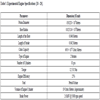
Experimental Engine Specifications [18M.L. Baglione, "Development of System Analysis Methodologies and Tools for Modeling and Optimizing Vehicle System Efficiency", PhD Thesis, University of Michigan: Michigan, .-20C.R. Ferguson, and A.T. Kirkpatrick, Internal combustion engines: Applied thermosciences, John Wiley & Sons: New York, pp. 325-402.].
The performance of an ICE depends on various measures like bore, fuel consumption, Brake Mean Effective Pressure (BMEP), Displacement of piston and etc. Table 4 below shows the performance testing results of the engine stated in Table 3.
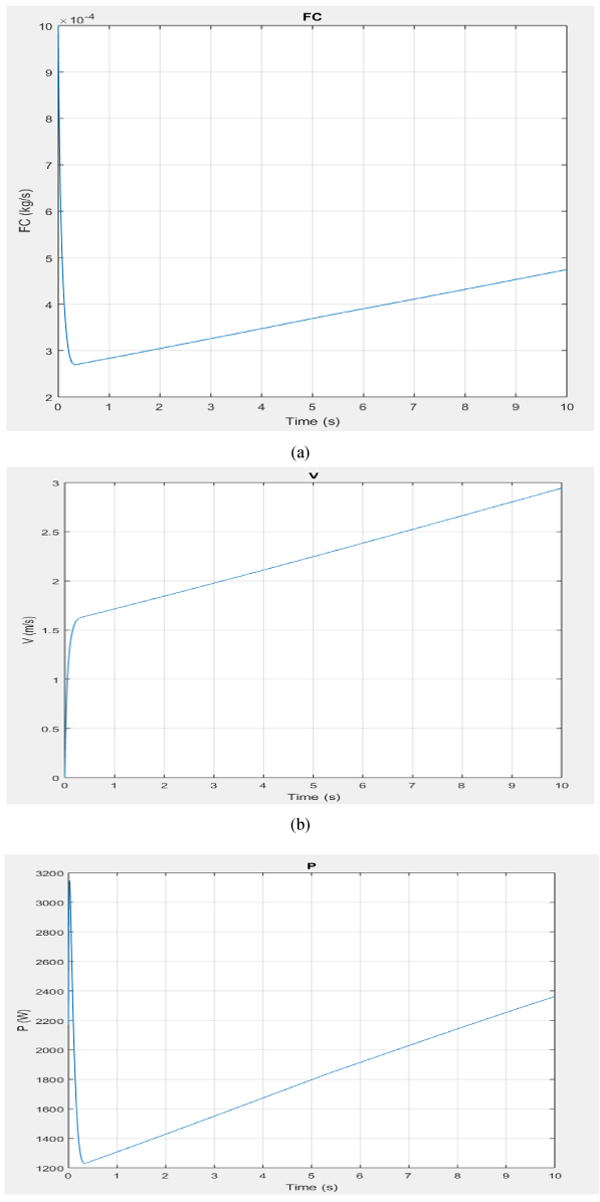 |
Fig. (3) Simulated results using Simulink platform. (a) Fuel Consumption vs time profile, (b) Velocity profile with respect to time and (c) Power consumption profile. |
Vehicle simulation model driven by engine was done regarding the above data. The simulations were done using Simulink platform. For engine properties Table 3 and for vehicle properties Table 4 was used. Fig. (3 ) shows the simulated results.
) shows the simulated results.

Engine Performance Testing [21R.S. Khurmi, and J.K. Gupta, A Textbook Of Thermal Engineering (Mechanical Technology)., S. Chand, pp. 611-632.].
2.2. Solar Photovoltaic (PV) Module Specification and Power Consumption
The battery used as electrical energy source will be charged in two ways, from National Grid and Solar PV module, respectively. A perfect designed PV module is needed to charge the batteries. The specifications of the PV module are given in the following Table 5 below.
Let, The total weight of the proposed Vehicle =500 kg (including all mountings and passengers)
Average speed = 35 kmph
Total Power = Total weight of vehicle × g × speed × gradient of velocity
= 500 × 9.8 ×35 kmph × .03 Watts
= 500 × 9.8 × 9.7 kmps × .03 Watts
= 1426 Watts
Here, the induction motor used is of 12V-1kW rated.
 42 Amp.
42 Amp.
Load Current per Day = Current Flow × Running Time per Day × 1.2
= 42 × 5 hrs × 1.2 250 Amp.hrs/Day
Capacity of the Battery = Load Current per Day × 1.2 ≈ 300 Amp.hrs/Day (overall 25% losses)
Power required to run the motor = Capacity of Battery × Voltage Difference
= 250 × 36 = 9000 Whrs/Day

Now, here The Capacity of Solar Panel is 12V-180W,
Current Flow = (180/12)/4 = 3.75 Amp to each Battery
Charging Time = 250/3.75 = 66.67 hrs
If one Solar Panel is used then in 8 hrs of daylight the system will be charged
 or 12%. But if the numbers of solar panels are increased then this charging would be more efficient. This percentage of charging can be increased by increasing the number of solar panels. If two solar panels are used, then the system will be charged 24% using PV module.
or 12%. But if the numbers of solar panels are increased then this charging would be more efficient. This percentage of charging can be increased by increasing the number of solar panels. If two solar panels are used, then the system will be charged 24% using PV module.
3. RECHARGING INFRASTRUCTURE AND DRIVE CYCLE
This proposed power plant is designed according to charge 50 auto-rickshaws. As stated above, this type of auto rickshaw needs around 1430 Watts power to run 5 hours/day. If we want to provide the full power from solar charging then the power plant capacity should be (50*1430) = 71.5 kW.
A set of 18, 5 kW solar modules will be used to make the power station. The total output will be 90*0.9 = 81 kW [24AliBaba Online Selling, https://www.alibaba.com/product-detail/ Off-grid-5kw-solar-powergenerator803787671.html?spm=a 2700.7735675.30.21.3c420d3fsmKjds☀s=p last accessed: 09/11/2017].
Fig. (4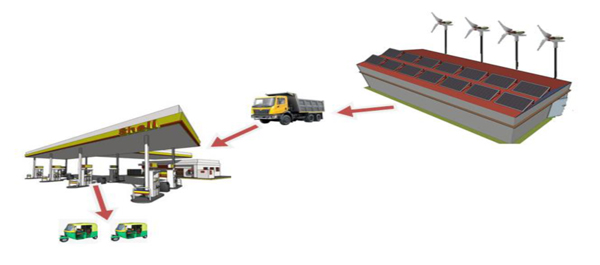 ) shows the diagram of recharging infrastructure suitable for Bangladesh.
) shows the diagram of recharging infrastructure suitable for Bangladesh.
 |
Fig. (4) Recharging infrastructure for proposed vehicle. |
In this situation, a rickshaw administrator would go to neighborhood power stations (potentially the current service stations), where his released batteries would be swapped with completely charged batteries. The completely charged batteries would be brought from an off-site reviving station to the administration stations by electric truck, as shown in Fig. (4 ) [10P. Mulhall, S.M. Lukic, S.G. Wirasingha, Y.J. Lee, and A. Emadi, "Solar-assisted electric auto rickshaw three-wheeler", IEEE Trans. Vehicular Technol., vol. 59, no. 5, pp. 2298-2307.
) [10P. Mulhall, S.M. Lukic, S.G. Wirasingha, Y.J. Lee, and A. Emadi, "Solar-assisted electric auto rickshaw three-wheeler", IEEE Trans. Vehicular Technol., vol. 59, no. 5, pp. 2298-2307.
[http://dx.doi.org/10.1109/TVT.2010.2045138] , 25S.M. Lukic, P. Mulhall, and A. Emadi, "Energy autonomous solar/battery auto rickshaw", J. Asian Elect. Vehicles, vol. 6, no. 2, pp. 1135-1143.
[http://dx.doi.org/10.4130/jaev.6.1135] ].
There are a few objectives set for the outline of the energizing station:
1. The battery replacing procedure must be as easy as filling the tank with fuel to a rickshaw driver. In Bangladesh most of the drivers are not skilled.
2. The use of renewable energy sources should be increased in Bangladesh to reduce the pressure on nonconventional energy sources.
3. In addition, in Bangladesh grid energy is not available in every place. This type of power station is effective in rural places.
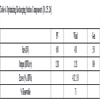
Optimizing Recharging Station Components [10P. Mulhall, S.M. Lukic, S.G. Wirasingha, Y.J. Lee, and A. Emadi, "Solar-assisted electric auto rickshaw three-wheeler", IEEE Trans. Vehicular Technol., vol. 59, no. 5, pp. 2298-2307.
[http://dx.doi.org/10.1109/TVT.2010.2045138] , 25S.M. Lukic, P. Mulhall, and A. Emadi, "Energy autonomous solar/battery auto rickshaw", J. Asian Elect. Vehicles, vol. 6, no. 2, pp. 1135-1143.
[http://dx.doi.org/10.4130/jaev.6.1135] , 26Fernandez-Gamiz Unai, "Five megawatt wind turbine power output improvements by passive flow control devices", Energies, vol. 10, no. 6, p. 742.]
Table 6 shows the optimization of recharging components. For the re-charging solar and wind energy systems are used in combination. For avoiding connection to grid, propane generator is used as an energy buffer.
Drive cycle is assumed to be a vital part in outlining of a hybrid drive train. Normally, the auto-rickshaws go around 50–60 km per day. The federal test FTP-75 is used here to conduct the drive cycle considering typical auto-rickshaw dimensions and parameters and road conditions in Bangladesh. The normal drive cycle speed is taken 25 Km/hr, which compares the internal city activity circumstance. Drive cycle and drive power demand were done using ADVISOR platform.
Fig. (5 ) represents the graphical model of urban drive cycle. The drive cycle and the vehicle specifications listed in Tables 2 and 3 can be used to calculate the wheel torque, TW as follows:
) represents the graphical model of urban drive cycle. The drive cycle and the vehicle specifications listed in Tables 2 and 3 can be used to calculate the wheel torque, TW as follows:
 |
Fig. (5) Urban part of modified Bangladeshi drive cycle. |
TW(t) = Cr.MV.g.RW + (1/2). [25S.M. Lukic, P. Mulhall, and A. Emadi, "Energy autonomous solar/battery auto rickshaw", J. Asian Elect. Vehicles, vol. 6, no. 2, pp. 1135-1143.
[http://dx.doi.org/10.4130/jaev.6.1135] ]
Where, g = gravitaional accelertion
p = air density (1.225 kg/m3)
And wheel speed,

The drive power demand is,

In Fig. (6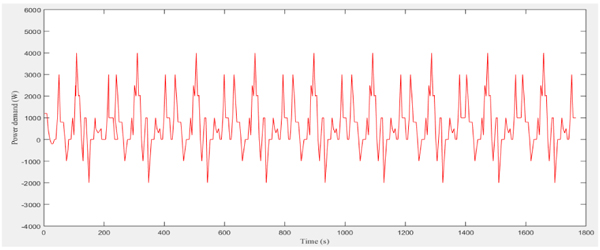 ), the drive power request is computed at every moment for the whole length of the drive cycle. The drive power demand is utilized to compute the braking energy that is accessible for regeneration and henceforth select the extent of the energy storage system.
), the drive power request is computed at every moment for the whole length of the drive cycle. The drive power demand is utilized to compute the braking energy that is accessible for regeneration and henceforth select the extent of the energy storage system.
 |
Fig. (6) Drive power demand. |
4. FEASIBILITY ANALYSIS
Feasibility is an analysis and evaluation of a proposed system to determine if it is (1) technically possible to make, (2) is practicable within the estimated cost, and (3) will gain profit. Feasibility studies are almost always conducted where the proposed system has some possibility of break-down issue [27Feasibility Study (Business Dictionary), https://www.businessdictionary.com/definition/feasibility-study.html].
Here we have considered installation cost and environmental risk as variable measure. If the installation cost of micro-hybrid to a conventional engine operated auto-rickshaw has a bearable cost and the payback period of this excess cost is suitable then this system would be cost-effective.
4.1. Installation Cost Calculations
In this section, installation cost of micro-hybrid system to a conventional engine operated vehicle is shown. Table 7 shows the cost assumptions for installing micro-hybrid system:
Here, as micro-hybrid system costs nearly the same of conventional gearing arrangement of ICE operated auto-rickshaw, so this cost can be omitted for the simplicity of cost estimation of new component installation.
In this system, it typically needs:
1-2 pcs of PV Panel(s) + 4 pcs of Battery + 1 pcs of Induction Motor = 46000-53000 BDT (554-638 USD approximately)
Thus, maximum installation cost of the proposed vehicle is 53000 BDT (Nearly 638 USD).
4.2. Payback Period of New Installation Cost
Payback period is the time required for the amount invested in an asset to be repaid by the net cash flow generated by the asset. It is a very simple way to evaluate the risk associated with a proposed project. An investment with a shorter payback period is considered to be better, since the investor’s initial outlay is at risk for a shorter period of time [28Payback Period (Accounting Tools), www.accountingtools.com/articles/2017/5/17/payback-method-payback-period-formula Last accessed- 04/10/2017, 29M.U. Khan, M. Saleem, and N. Khan, "Establishment process strategies and profit or loss calculation of transport & logistics company: a case of s-transporter of aligarh", Int. J. Manage. Res. Rev., vol. 7, no. 2, p. 134.].
Formula of payback period is,

Here,
ny = The number of years after the initial investment at which the last negative value of cumulative cash flow occurs.
n = The value of cumulative cash flow at which the last negative value of cumulative cash flow occurs.
p = The value of cash flow at which the first positive value of cumulative cash flow occurs.
In this proposed vehicle,
Total power calculated to run the system = 1426 Watts
Power required to run the motor 9 kwatts.hr/day = 9 unit
In Bangladesh, commercial electric line cost 25 bdt/unit [Source: DESCO, https://www.desco.org.bd/ ]
Requires = 9000/ 5* 36* 4 = 12.5 hours to charge the full battery.
Cost to charge the battery= 12.5*25 = 312.5 bdt/day
Table 8 shows the payback period for the system.
From the analysis above, Case-2 is more favorable.
Fig. (7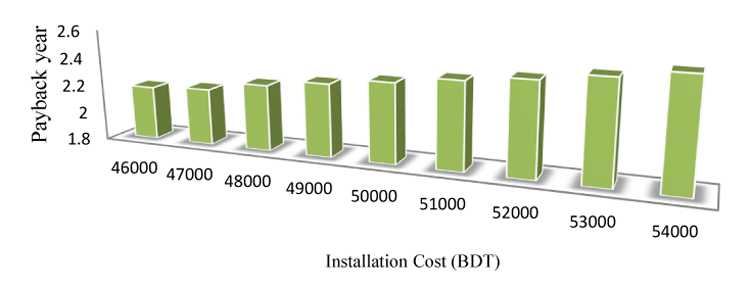 ) shows a graphical representation of Payback Period and Installation Cost.
) shows a graphical representation of Payback Period and Installation Cost.
 |
Fig. (7) Payback Period vs Installation Cost graph. |
So, the payback time of this proposed system is between 2-2.5 years (approximately). A typical auto-rickshaw running age is between 18-20 years without much fluctuation in its performance [30M.A. Rahim, M.U.H. Joardder, S.M. Houque, M.M. Rahman, and N.A. Sumon, "Socio-economic & environmental impacts of battery driven
auto rickshaw at Rajshahi city in Bangladesh", In: International Conference on Mechanical, Industrial and Energy Engineering, KUET, Khulna, 2013.]. Fig. (8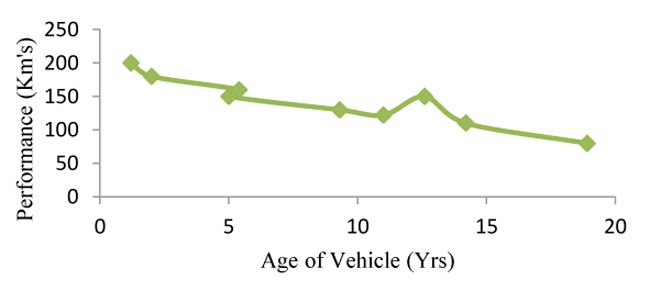 ) shows the relation between the running age and performance of a typical auto-rickshaw of Bangladesh.
) shows the relation between the running age and performance of a typical auto-rickshaw of Bangladesh.
 |
Fig. (8) Age vs Performance graph for sub-continental auto-rickshaws. |
This proposed system needs 2-2.5 years to gain the installation cost, this payback time is only about 11-14% or less than 1/5Th of the total running lifetime of an auto-rickshaw. So, this proposed system seems to be a profitable one by cost estimation.
4.3. Environmental Impact Analysis
Environmental impact analysis of a system is a mathematical prediction of that shows how much environment friendly that system is or how much harm can it cause. It is a very important factor regarding feasibility measurement of a system. This research is mainly focused on lessen the conventional energy consumption via using renewable energy in Bangladesh.
In Bangladesh, electricity is mainly produced by using thermal power plants. Those thermal power plants are a key source of CO2 gas emission resulting in enhanced greenhouse effect [4I.R. Mujawar, and M. Avijit, "Case study on greenhouse process, gases, effect and control management", Int. J. Innovative Res. Adv. Stud., vol. 4, no. 5, pp. 430-440.]. A 500 MW thermal power plant can produce up to 1 kg/kWhr production of electricity [31A.B. Rao, and E.S. Rubin, "A technical, economic, and environmental assessment of amine-based CO2 capture technology for power plant greenhouse gas control", Environ. Sci. Technol., vol. 36, no. 20, pp. 4467-4475.
[http://dx.doi.org/10.1021/es0158861] [PMID: 12387425] ].
Fig. (9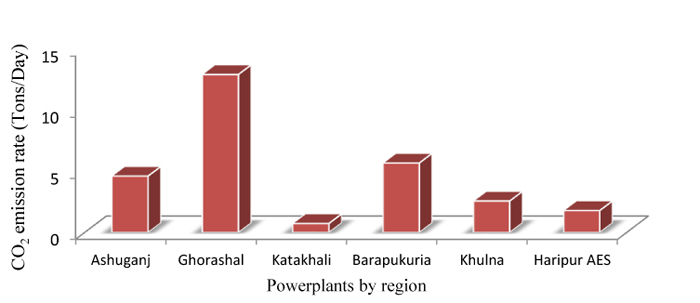 ) gives a complete knowledge about CO2 emission from the power plants of Bangladesh.
) gives a complete knowledge about CO2 emission from the power plants of Bangladesh.
 |
Fig. (9) CO2 emission rates of various power plants in Bangladesh [31A.B. Rao, and E.S. Rubin, "A technical, economic, and environmental assessment of amine-based CO2 capture technology for power plant greenhouse gas control", Environ. Sci. Technol., vol. 36, no. 20, pp. 4467-4475. [http://dx.doi.org/10.1021/es0158861] [PMID: 12387425] -35P.S. Norman, Evaluation of the Barapukuria coal deposit NW Bangladesh.Case Histories and Methods in Mineral Resource evaluation.”, Geological Society., vol. 63, Special Publication, pp. 107-120. [http://dx.doi.org/10.1144/GSL.SP.1992.063.01.10] ]. |
All these properties are approximate and some are estimated.
Our proposed vehicle system offers about 24% less power consumption from National Grid. So, a huge number of these proposed vehicles will save more electrical energy resulting in less emission of CO2 from the fuel fired power plants.
Here, Katakhali Power Plant (Rajshahi) of 50MW capacity will be kept under consideration for calculation.
Assuming the plant as a 24 hrs/day working system,
Maximum electricity supplied by the plant = 50000 kWhr
The daily CO2 emission from Katakhali = 0.72399 tons

Now, if this proposed vehicle system is implemented on Rajshahi City then, let, the numbers of proposed auto-rickshaws = 2000 (estimated)
Energy savings per day per vehicle = 2.16 kWh [From previous feasibility calculation]
Total energy savings per day = (2000*2.16) kWh = 4320 kWh
CO2 emission to produce 4320 kWh supply is = tons = 0.062553 tons (w.r.t. Katakhali Plant)
Lessen of CO2 emission from Katakhali via using this system

From the above analysis, it can be surely said that the proposed vehicle system if implemented in Rajshahi City, then per day CO2 emission can be reduced upto 8.64% and power can be saved upto 4320 kWhr per day. This analysis was performed considering no system loss; there remains a 25% system loss in thermal power plants. If the system loss is considered then actual percentage of CO2 emission lessens from Katakhali Plant will be about 20-22%.
This feasibility analysis shows this system not only a cost effective but also an environment friendly one. This analysis mathematically proofs that vehicle system to be an effective one.
CONCLUSION
In the above described hybrid system, a whole system combined with an ICE and electrical power source (rechargeable battery can be charged by solar power and national grid) was used which is not so familiar from the perspective of Bangladesh. Some of the data were collected from different auto rickshaw driver. Some data were neglected which were far away from the majority. Quite similar mechanism now a day, can be seen in different automobiles but here the system is applied to a three wheeler. The system ensures the proper use of the solar energy. This vehicle could be a solution to the toxic greenhouse gases and particles. The vehicle would take the utilization of green energy to the next step, which would eventually help the world more safe and comfortable for living beings.
CONSENT FOR PUBLICATION
Not applicable.
CONFLICT OF INTEREST
The authors declare no conflict of interest, financial or otherwise.
ACKNOWLEDGEMENTS
We fell highly indebted and would like to acknowledge with due respect and gratitude the valuable and undeniable helps and guidelines received from Dr. Mohammad Uzzal Hossain Joardder, Assistant Professor, Department of Mechanical Engineering and other Teachers of Rajshahi University of Engineering & Technology.
REFERENCES
| [1] | R. Basri, T. Khatun, M.S. Reza, and M.M.H. Khan, "Changing modes of transportation: A case study of rajshahi city corporation", Bangladesh J. Pol. Econ., vol. 29, no. 3, pp. 1-23. |
| [2] | R. Brouwer, S. Akter, L. Brander, and E. Haque, "Socioeconomic vulnerability and adaptation to environmental risk: A case study of climate change and flooding in Bangladesh", Risk Anal., vol. 27, no. 2, pp. 313-326. [http://dx.doi.org/10.1111/j.1539-6924.2007.00884.x] [PMID: 17511700] |
| [3] | Md. Arefin, A. Mallik, A. Mujawar, and I. Rashid, "A case study nn ‘ dual energy source running Vehicle, It’s design and implementation in Bangladesh", Int. J. Sci. Environ. Technol., vol. 6, no. 4, pp. 2369-2385. |
| [4] | I.R. Mujawar, and M. Avijit, "Case study on greenhouse process, gases, effect and control management", Int. J. Innovative Res. Adv. Stud., vol. 4, no. 5, pp. 430-440. |
| [5] | F. Ahmed, and H. Ishiga, "Trace metal concentrations in street dusts of Dhaka city, Bangladesh", Atmos. Environ., vol. 40, no. 21, pp. 3835-3844. [http://dx.doi.org/10.1016/j.atmosenv.2006.03.004] |
| [6] | M. Avijit, Md A. Arefin, and S. Kumar, "Solar based micro hybridized auto-rickshaw and its feasibility analysis for bangladesh", Proceedings of the Int. Conf. Mech. Eng. Ren. Energy (ICMERE), . CUET, 18-20 December |
| [7] | S.I. Sharif, A.R.A. Md, M. Al-Amin, and A.B.S. Md, "The prospect of renewable energy resources in bangladesh: A study to achieve the national power demand", Energy and Power, vol. 8, no. 1, pp. 1-6. [http://dx.doi.org/10.5923/j.ep.20180801.01] |
| [8] | S.M. Lukic, P. Mulhall, G. Choi, M. Naviwala, S. Nimmagadda, and A. Emadi, "Usage pattern development for three-wheel auto rickshaw taxis in India", Vehicle Power and Propulsion Conference, 2007. VPPC 2007. IEEE, IEEE, pp. 610-616. [http://dx.doi.org/10.1109/VPPC.2007.4544195] |
| [9] | T. Hofman, S.G. Van Der Tas, W. Ooms, E.W.P. Van Meijl, and B.M. Laugeman, "Development of a micro-hybrid system for a three-wheeled motor taxi", World Electric Veh. J., vol. 3, no. 3, p. 1. |
| [10] | P. Mulhall, S.M. Lukic, S.G. Wirasingha, Y.J. Lee, and A. Emadi, "Solar-assisted electric auto rickshaw three-wheeler", IEEE Trans. Vehicular Technol., vol. 59, no. 5, pp. 2298-2307. [http://dx.doi.org/10.1109/TVT.2010.2045138] |
| [11] | A.S. Kumarage, M. Bandara, and D. Munasinghe, "Analysis of the economic and social parameters of the Three-wheeler Taxi service in Sri Lanka", Res. Transp. Econ., vol. 29, no. 1, pp. 395-400. [http://dx.doi.org/10.1016/j.retrec.2010.07.050] |
| [12] | J.C. Kelly, J.S. MacDonald, and G.A. Keoleian, "Time-dependent plug-in hybrid electric vehicle charging based on national driving patterns and demographics", Appl. Energy, vol. 94, pp. 395-405. [http://dx.doi.org/10.1016/j.apenergy.2012.02.001] |
| [13] | A. Mani, M. Pai, and R. Aggarwal, "Sustainable urban transport in India: Role of the auto-rickshaw sector. ", PhD Thesis, World Recourses Institute, .http://www.wri.org/sites/default/files/pdf/sustainable_urban_transport_india.pdf |
| [14] | N. Shaha, and M.B. Uddin, "Hybrid energy assisted electric auto rickshaw three-wheeler", In: Electrical Information and Communication Technology, (EICT), 2013 International Conference on. IEEE, 2014, 2013. |
| [15] | P. Adak, R. Sahu, and S.P. Elumalai, "Development of emission factors for motorcycles and shared auto-rickshaws using real-world driving cycle for a typical Indian city", Sci. Total Environ., vol. 544, pp. 299-308. [http://dx.doi.org/10.1016/j.scitotenv.2015.11.099] [PMID: 26657376] |
| [16] | M.H. Masud, M.S. Akhter, S. Islam, A.M. Parvej, and S. Mahmud, "Design, construction and performance study of a solar assisted Tri-cycle", Period. Polytech. Mech. Eng., vol. 61, no. 3, pp. 234-241. [http://dx.doi.org/10.3311/PPme.10240] |
| [17] | L.R. Brandenburg, and E.T. King, No. 5291960. U.S. Patent. Hybrid electric vehicle regenerative braking energy recovery system, 1994. |
| [18] | M.L. Baglione, "Development of System Analysis Methodologies and Tools for Modeling and Optimizing Vehicle System Efficiency", PhD Thesis, University of Michigan: Michigan, . |
| [19] | Specifications of Bajaj Auto-rickshaw, Specifications of Bajaj Auto-rickshaw, https://www.bajajauto.com/bajajre/index.aspx, .https://www.bajajauto.com/bajajre/index.aspx last accessed- 24/10/2017 |
| [20] | C.R. Ferguson, and A.T. Kirkpatrick, Internal combustion engines: Applied thermosciences, John Wiley & Sons: New York, pp. 325-402. |
| [21] | R.S. Khurmi, and J.K. Gupta, A Textbook Of Thermal Engineering (Mechanical Technology)., S. Chand, pp. 611-632. |
| [22] | M.A. Green, Solar cells: Operating principles, technology, and system applications., pp. 63-94. |
| [23] | Grameen Shakti Solar Co, https://www.gshakti.org , .https://www.gshakti.org last accessed- 05/11/2017 |
| [24] | AliBaba Online Selling, https://www.alibaba.com/product-detail/ Off-grid-5kw-solar-powergenerator803787671.html?spm=a 2700.7735675.30.21.3c420d3fsmKjds☀s=p last accessed: 09/11/2017 |
| [25] | S.M. Lukic, P. Mulhall, and A. Emadi, "Energy autonomous solar/battery auto rickshaw", J. Asian Elect. Vehicles, vol. 6, no. 2, pp. 1135-1143. [http://dx.doi.org/10.4130/jaev.6.1135] |
| [26] | Fernandez-Gamiz Unai, "Five megawatt wind turbine power output improvements by passive flow control devices", Energies, vol. 10, no. 6, p. 742. |
| [27] | Feasibility Study (Business Dictionary), https://www.businessdictionary.com/definition/feasibility-study.html |
| [28] | Payback Period (Accounting Tools), www.accountingtools.com/articles/2017/5/17/payback-method-payback-period-formula Last accessed- 04/10/2017 |
| [29] | M.U. Khan, M. Saleem, and N. Khan, "Establishment process strategies and profit or loss calculation of transport & logistics company: a case of s-transporter of aligarh", Int. J. Manage. Res. Rev., vol. 7, no. 2, p. 134. |
| [30] | M.A. Rahim, M.U.H. Joardder, S.M. Houque, M.M. Rahman, and N.A. Sumon, "Socio-economic & environmental impacts of battery driven auto rickshaw at Rajshahi city in Bangladesh", In: International Conference on Mechanical, Industrial and Energy Engineering, KUET, Khulna, 2013. |
| [31] | A.B. Rao, and E.S. Rubin, "A technical, economic, and environmental assessment of amine-based CO2 capture technology for power plant greenhouse gas control", Environ. Sci. Technol., vol. 36, no. 20, pp. 4467-4475. [http://dx.doi.org/10.1021/es0158861] [PMID: 12387425] |
| [32] | S. Holloway, and H.E. Baily, “Coal bed methane pre-feasibility study-NW Bangladesh”, Technical Report Wc/95/59 R., British Geological Survey, Overseas Geology Series, pp. 1-26. |
| [33] | R.R. Rahman, and M.A. Zaher, "Jamalganj Coal - its quantity, quality and minability. Petroleum and Mineral Resources of Bangladesh", In: Proceedings of the Seminar and Exhibition, 8-12 October, Peoples Republic of Bangladesh, 1980. |
| [34] | M. Nazrul Islam, M. Nehal Uddin, S.A. Resan, and M. Sultan-Ul-Islam, "Geology of the Khalspir Coal Basin, Pirganj", Rec. Geol. Surv. Bangladesh, vol. 6, no. 5, .Rangpur, Bangladesh |
| [35] | P.S. Norman, Evaluation of the Barapukuria coal deposit NW Bangladesh.Case Histories and Methods in Mineral Resource evaluation.”, Geological Society., vol. 63, Special Publication, pp. 107-120. [http://dx.doi.org/10.1144/GSL.SP.1992.063.01.10] |





